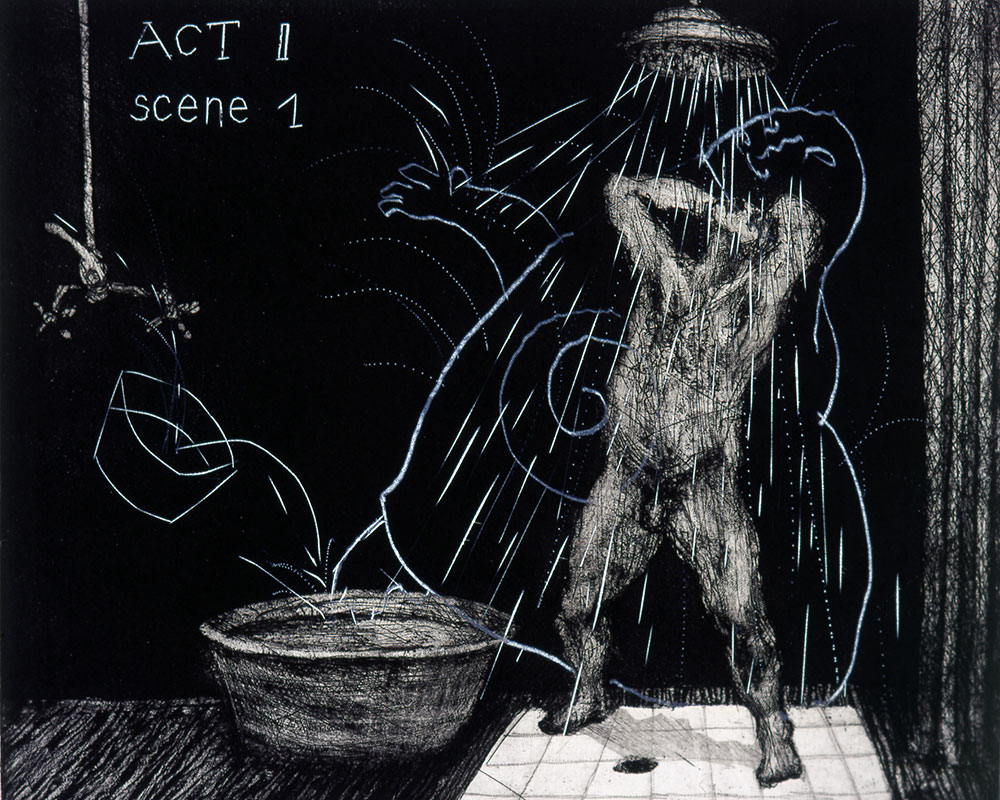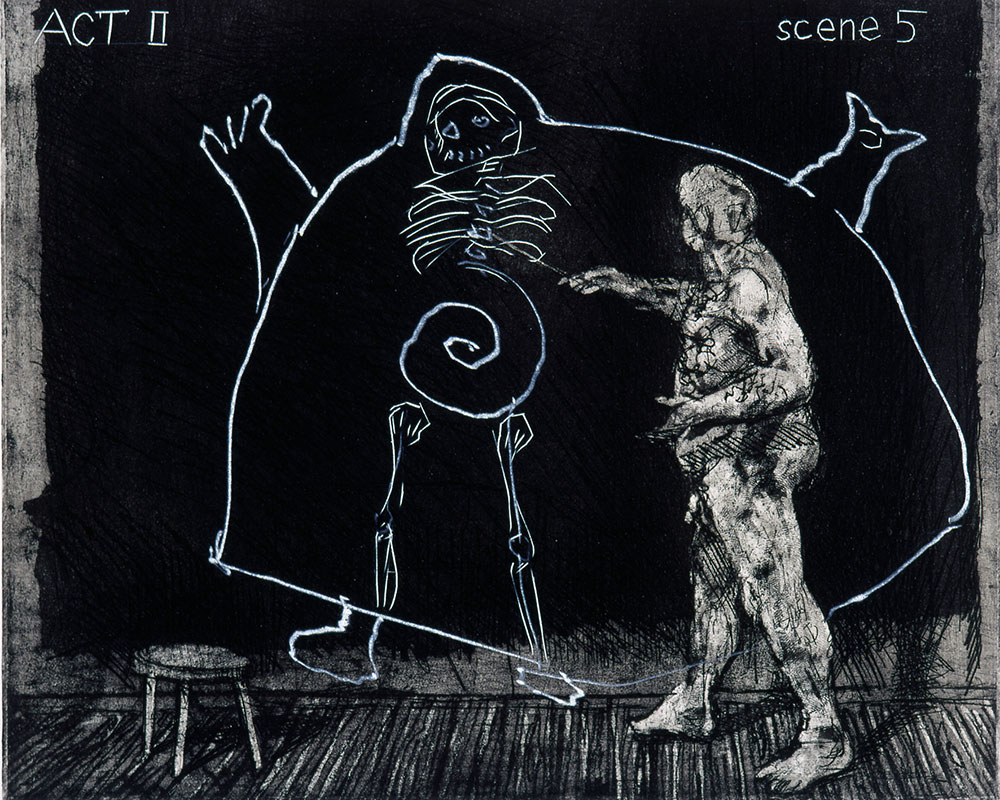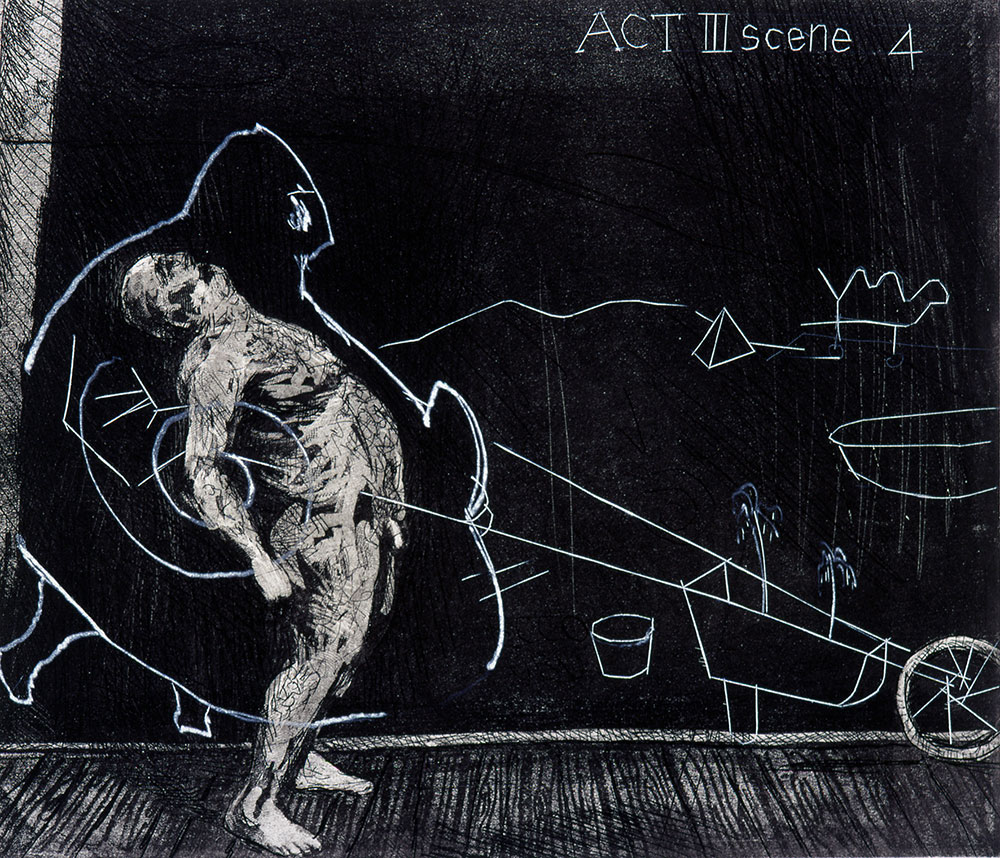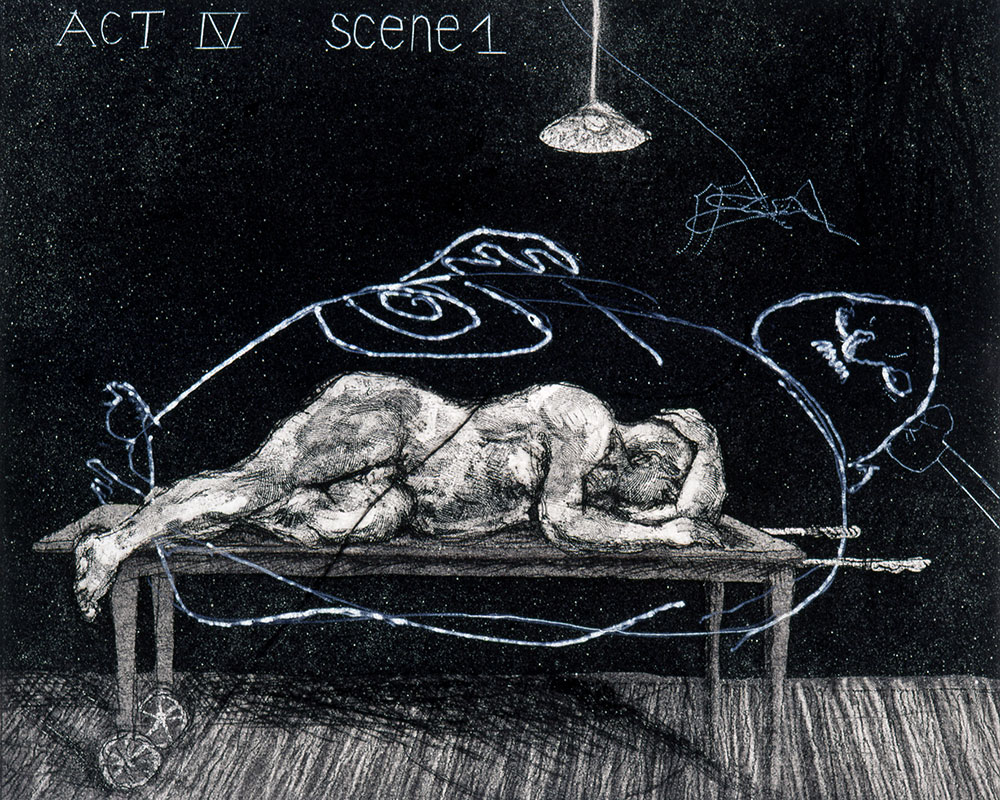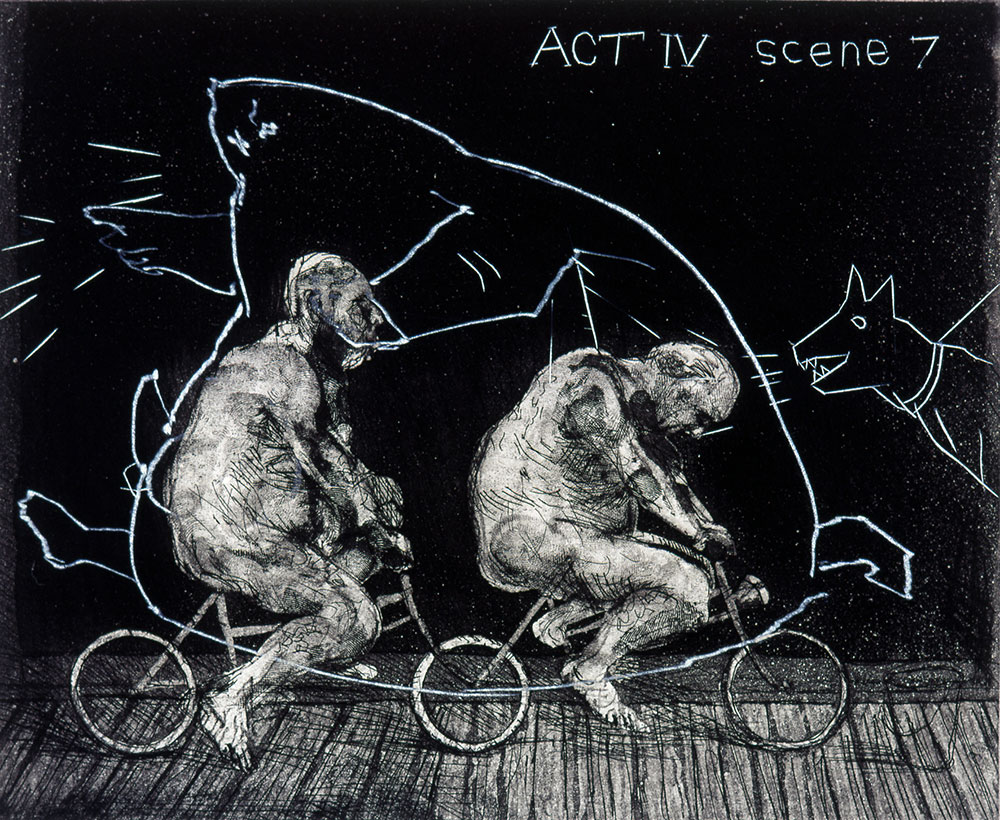Kentridge once stated that Ubu resides in all of us. In this series of eight etchings, the artist suggests a kind of hybrid self-portraiture. Kentridge used photographs of himself as the basis for the figures and juxtaposed them with the grotesque body of Ubu, rendered cartoonishly in chalk. The works originated in the context of the Truth and Reconciliation Committee hearings in the postapartheid era of the artist’s native South Africa. Revelations of the government’s barbarity, as well as the victims’ unresolved desire for both retribution and amnesty, informed Kentridge’s exploration of art attuned to ambiguity. Kentridge continued to use Ubu in works across mediums, including, and often combining, drawing, painting, animation, theater, video, and sculpture.
William Kentridge (b. 1955), Ubu Tells the Truth, 1996–97, hardground, softground, aquatint, drypoint, and engravings. The Robert J. and Linda Klieger Stillman Pataphysics Collection. The Robert J. and Linda Klieger Stillman Pataphysics Collection. Courtesy of the artist and Marian Goodman Gallery.
Plan your visit. 225 Madison Avenue at 36th Street, New York, NY 10016.
Plan your visit. 225 Madison Avenue at 36th Street, New York, NY 10016.


